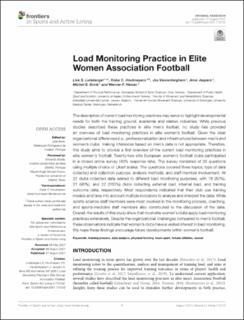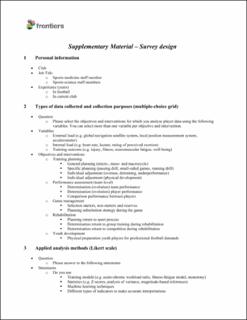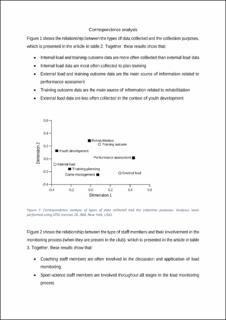| dc.contributor.author | Houtmeyers, Kobe C. | |
| dc.contributor.author | Vanrenterghem, Jos | |
| dc.contributor.author | Jaspers, Arne | |
| dc.contributor.author | Brink, Michel S. | |
| dc.contributor.author | Helsen, Werner F. | |
| dc.contributor.author | Luteberget, Live | |
| dc.date.accessioned | 2022-03-10T13:45:39Z | |
| dc.date.available | 2022-03-10T13:45:39Z | |
| dc.date.created | 2021-11-02T16:04:46Z | |
| dc.date.issued | 2021 | |
| dc.identifier.citation | Frontiers in Sports and Active Living. 2021, 3(2021), Artikkel 715122. | en_US |
| dc.identifier.issn | 2624-9367 | |
| dc.identifier.uri | https://hdl.handle.net/11250/2984328 | |
| dc.description | This is an open-access article distributed under the terms of the Creative Commons Attribution License (CC BY). The use, distribution or reproduction in other forums is permitted, provided the original author(s) and the copyright owner(s) are credited and that the original publication in this journal is cited, in accordance with accepted academic practice. No use, distribution or reproduction is permitted which does not comply with these terms. | en_US |
| dc.description.abstract | The description of current load monitoring practices may serve to highlight developmental needs for both the training ground, academia and related industries. While previous studies described these practices in elite men's football, no study has provided an overview of load monitoring practices in elite women's football. Given the clear organizational differences (i.e., professionalization and infrastructure) between men's and women's clubs, making inferences based on men's data is not appropriate. Therefore, this study aims to provide a first overview of the current load monitoring practices in elite women's football. Twenty-two elite European women's football clubs participated in a closed online survey (40% response rate). The survey consisted of 33 questions using multiple choice or Likert scales. The questions covered three topics; type of data collected and collection purpose, analysis methods, and staff member involvement. All 22 clubs collected data related to different load monitoring purposes, with 18 (82%), 21 (95%), and 22 (100%) clubs collecting external load, internal load, and training outcome data, respectively. Most respondents indicated that their club use training models and take into account multiple indicators to analyse and interpret the data. While sports-science staff members were most involved in the monitoring process, coaching, and sports-medicine staff members also contributed to the discussion of the data. Overall, the results of this study show that most elite women's clubs apply load monitoring practices extensively. Despite the organizational challenges compared to men's football, these observations indicate that women's clubs have a vested interest in load monitoring. We hope these findings encourage future developments within women's football. | en_US |
| dc.language.iso | eng | en_US |
| dc.subject | data analysis | en_US |
| dc.subject | female athletes | en_US |
| dc.subject | physical training | en_US |
| dc.subject | soccer | en_US |
| dc.subject | team sport | en_US |
| dc.subject | training process | en_US |
| dc.title | Load monitoring practice in elite women association football | en_US |
| dc.type | Peer reviewed | en_US |
| dc.type | Journal article | en_US |
| dc.description.version | publishedVersion | en_US |
| dc.rights.holder | © 2021 Luteberget, Houtmeyers, Vanrenterghem, Jaspers, Brink and Helsen | en_US |
| dc.source.pagenumber | 7 | en_US |
| dc.source.volume | 3 | en_US |
| dc.source.journal | Frontiers in Sports and Active Living | en_US |
| dc.identifier.doi | 10.3389/fspor.2021.715122 | |
| dc.identifier.cristin | 1950706 | |
| dc.description.localcode | Institutt for fysisk prestasjonsevne / Department of Physical Performance | en_US |
| dc.source.articlenumber | 715122 | en_US |
| cristin.ispublished | true | |
| cristin.fulltext | original | |
| cristin.qualitycode | 1 | |


